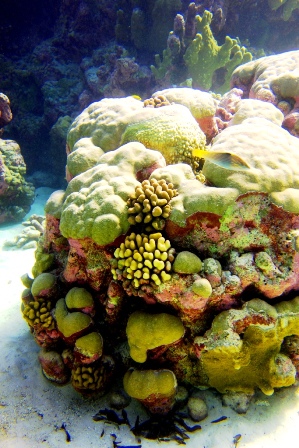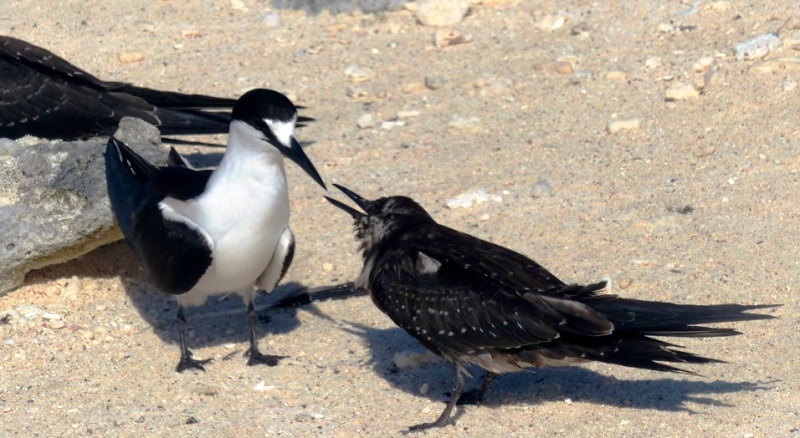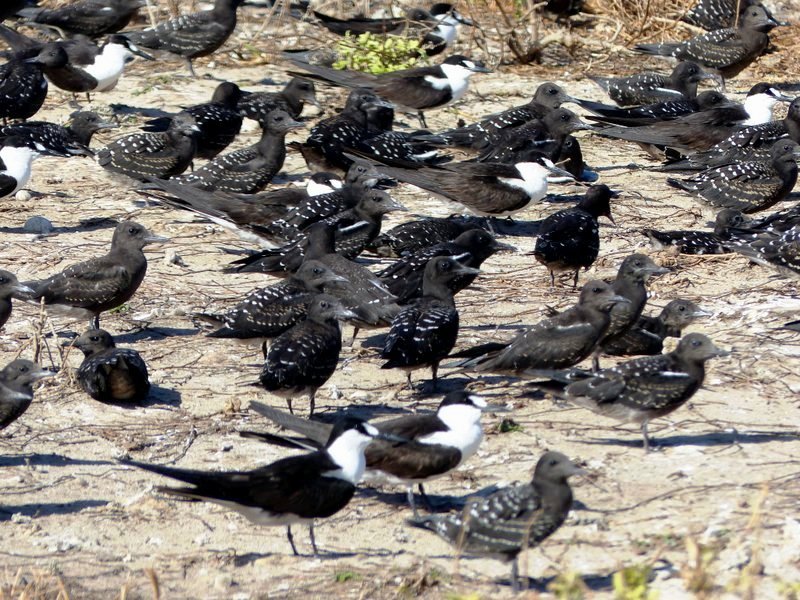Climate Changes in Seychelles (part 2) - Impacts on the breeding success of sea birds |26 September 2016
Aurélie Duhec and Richard Jeanne, conservation officers at Farquhar Atoll working for the Island Conservation Society (ICS) under the Outer Island Project funded by the Seychelles government, UNDP, GEF, and Islands Development Company (IDC) explain how climatic factors impact breeding success of sea birds.
Seychelles waters provide very good foraging grounds for seabirds
Under normal conditions there is plenty of food for the seabirds of Seychelles, thanks to the reversal  of the Asian monsoon winds which greatly impact the oceanography and control the productivity of the Indian Ocean. During the north-west monsoon, upwelling caused by the Somali Current generates a phytoplankton bloom that drifts north of the Seychelles from December to February enhancing food availability for fish and seabirds such as terns, shearwaters and tropicbirds.
of the Asian monsoon winds which greatly impact the oceanography and control the productivity of the Indian Ocean. During the north-west monsoon, upwelling caused by the Somali Current generates a phytoplankton bloom that drifts north of the Seychelles from December to February enhancing food availability for fish and seabirds such as terns, shearwaters and tropicbirds.
In contrast, the breeding season of many other seabirds, including Sooty Terns, occurs during the south-east monsoon when the south-easterly trade winds over the equator and the north-easterly winds form a cyclonic circulation responsible for a deep ocean upwelling around the Republic of Seychelles. This upwelling is found between the latitudes 5˚S and 12˚S and is named the Seychelles-Chagos Thermocline Region. It is responsible for a peak in phytoplankton bloom mainly during June-August.
Upwelling brings highly productive cold water to the surface, necessary for the development of the food web, including juvenile pelagic fish which seabirds feed on. But upwelling alone is not enough. The seabirds also rely on help from top predator fish and cetaceans. Effectively, the small fish are only accessible to seabirds when predators like tuna and spinner dolphins pursue and force them to flee towards the surface. The seabirds take an advantage of this phenomenon to catch their evasive prey.
El Niño and IOD impacted seabird breeding success in 2015
In 2015, the combination of El Niño and a positive IOD (see part 1 of this series) weakened the westerly winds that suppressed upwelling and increased the sea surface temperature. The absence of upwelling deprived the ocean of nutrient-rich cold water which lowered survival of the juvenile fish. It possibly caused the top predators to depart the foraging areas of the seabirds, while the warm surface waters might also lead top predators to remain in deeper and cooler water, thereby failing to drive small fish to the surface.
On Bird Island, Dr Feare and Christine Larose discovered that in normal years most of the Sooty Terns feed over the shallow waters of the Seychelles Bank. While during the extreme heat of 2015, they recorded long egg incubation shifts between incubating adults, they also observed many birds deserting their eggs and young chicks because they were struggling to find food at their foraging grounds. The ICS team on Aride Island recorded delays in egg laying events, poor breeding success in the Sooty Tern, Lesser and Brown Noddy colonies, and a complete breeding failure for the Roseate Terns. On Desnoeufs, located 325km from Mahé, IDC staff noted that many adult Sooty Terns deserted their young chicks. Remarkably, however, on Farquhar, 770km away from Mahé, the breeding success was high (See our next article ‘Part 3’ to understand why conditions were different on Farquhar).


By Aurélie Duhec, ICS conservation officer on Farquhar & Jeanne A. Mortimer




